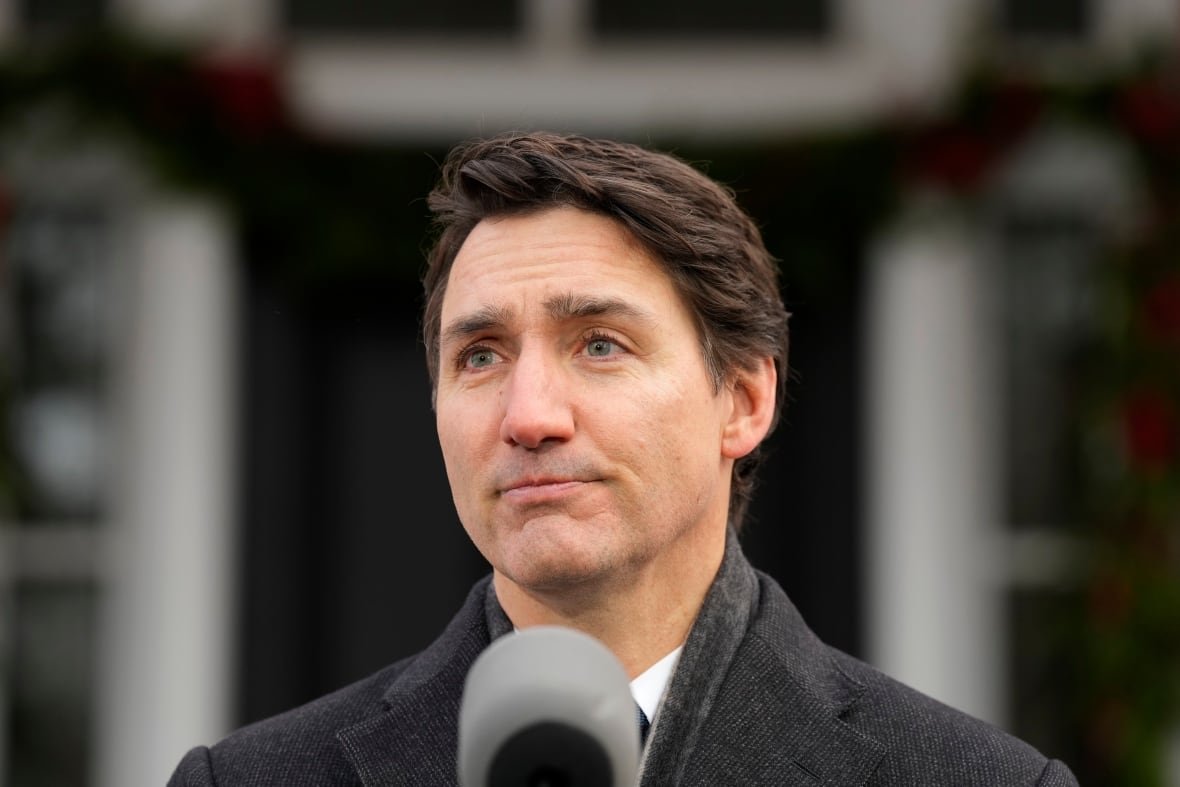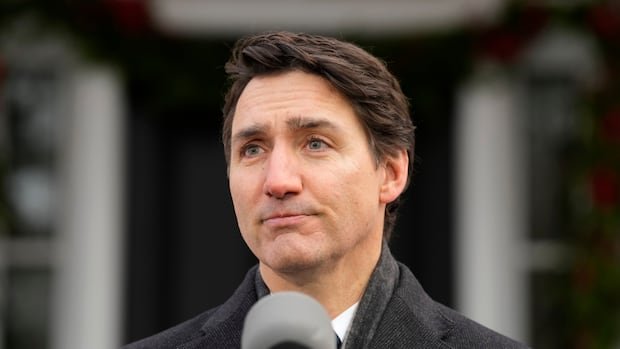Prime Minister Justin Trudeau on Tuesday dismissed U.S. president-elect Donald Trump’s willingness to use “economic force” to absorb Canada into the United States by reiterating what his Canadian government has said for some time: Merging countries is not in the realm of possibility.
“There isn’t a snowball’s chance in hell that Canada would become part of the United States,” Trudeau wrote on X.
“Workers and communities in both our countries benefit from being each other’s biggest trading and security partner.”
Earlier Tuesday, Trump continued to threaten significant tariffs on other countries and said he would consider using “economic force” to join Canada and the United States together.
“That would really be something,” he said at a news conference in Palm Beach, Fla.
“You get rid of the artificially drawn line and you take a look at what that looks like and it would also be much better nation security. Don’t forget: We basically protect Canada.”
President-elect Donald Trump again outlined his issues with Canada on Tuesday, citing concerns about Canada’s military and asserting that the U.S. is subsidizing the Canadian economy. He ruled out using military force on Canada, saying he would rely on ‘economic force’ when he returns to the Oval Office.
Trump, who takes office on Jan. 20, made the remarks from Mar-a-Lago in response to a question about whether he would use military force to “annex and acquire” Canada, if he was “serious” about trying to do so.
He later acknowledged he has no “right” to absorb the country into his own. Criticizing American spending on Canadian goods, said the United States is still not obligated to support its closest neighbour economically.
“We don’t need the cars, we don’t need the lumber…. We don’t need anything they have,” Trump said. “We have a right not to help them with their financial difficulties.”
In only his second news conference since his election victory in November, Trump reiterated his intent to impose “substantial” tariffs on Canada and Mexico when returns to the White House in less than two weeks. He did not campaign on a plan to annex Canada.
Trump previously threatened to impose a 25 per cent tariff on all imports from the two neighbouring nations unless they do more to address border security. He has also spoken repeatedly in favour about Canada becoming “the 51st state.”
Foreign Affairs Minister Mélanie Joly said the incoming U.S. president had “a complete lack of understanding of what makes Canada a strong country.”
“Our economy is strong. Our people are strong. We will never back down in the face of threats,” she wrote on X.

Gordon Giffin, a former U.S. ambassador to Canada, said he sees Trump’s bombastic rhetoric as a strategy to create a sense of urgency around his economic grievances, rather than any specific issues he has about Canada’s standing as its own country.
“Threatening Canada? I guess it sounded like that, but in the final analysis I think it’s all about economics and I think he’s had economic frustrations with respect to the North American economic experience since his first term,” Giffin told CBC News Network on Tuesday.
“Whether he means some ‘acquisition’ of Canada by the United States by any means? I actually don’t believe that.”
Trump won’t rule out military for Panama Canal, Greenland
Though he said he was not considering military force on Canada, he remarkably did not rule out that option to have the U.S. take back control of the Panama Canal and acquire the Danish territory of Greenland.
“No, I can’t assure you on either of those two. But I can say this: we need them for economic security,” he said of the latter.
He said he would “tariff Denmark at a very high level” if it does not give Greenland to the U.S.
Mexican, Danish Panamanian authorities did not immediately comment. Panamanian President José Raúl Mulino has previously rejected the notion of turning the canal back to the U.S., which had owned it before handing over control to Panama in 1999.

